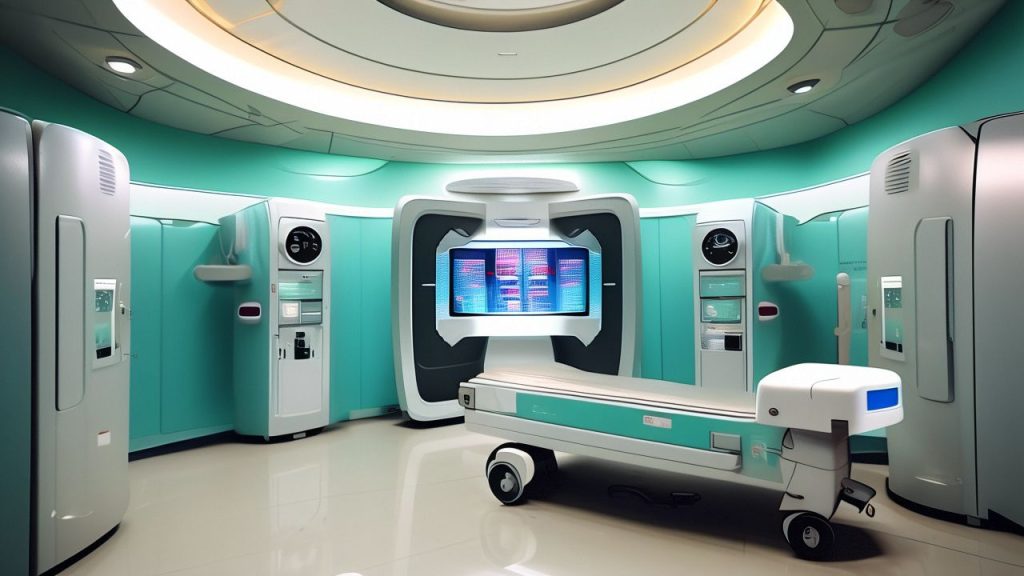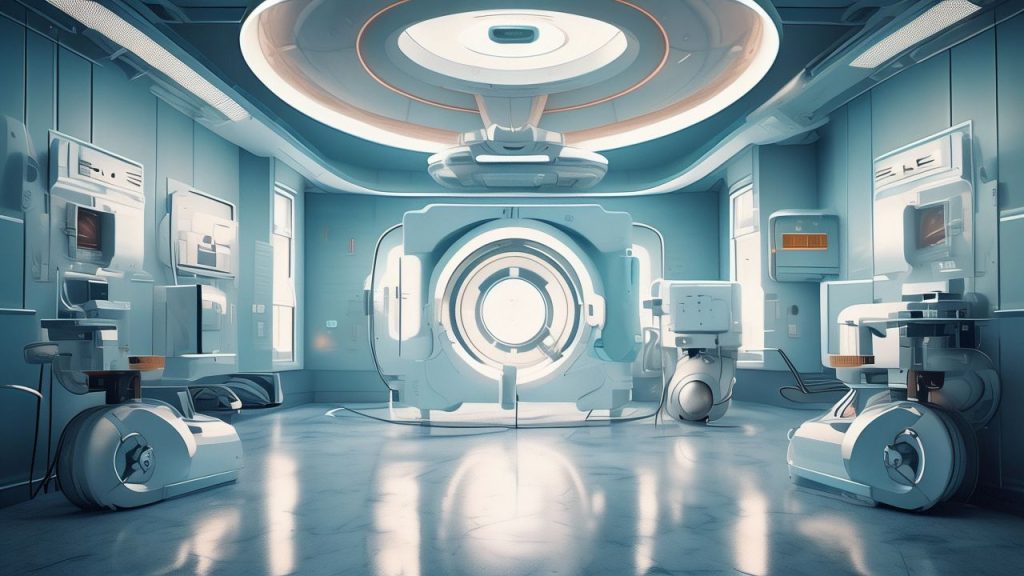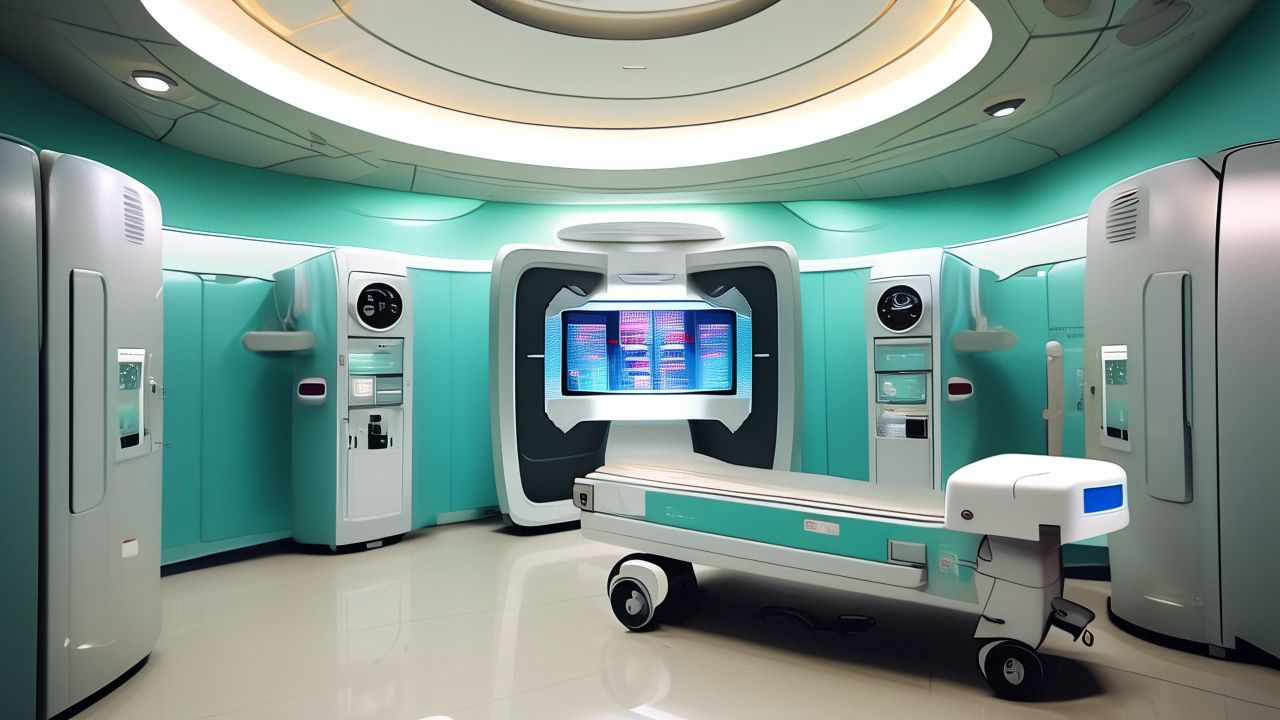what is radiation therapy and proton radiation therapy?
what is radiation therapy?
Radiation therapy, also known as radiotherapy, is a cancer treatment that uses high doses of radiation to kill cancer cells and shrink tumors. It is one of the most common treatments for cancer, either used alone or in combination with other treatments such as surgery and chemotherapy.

Radiation therapy works by damaging the DNA of cancer cells. This damage prevents the cells from growing and dividing, and ultimately leads to their death. Although radiation therapy can damage normal cells as well, the body has mechanisms to repair most of this damage, especially in tissues that are exposed to oxygen and nutrients.
types of radiation therapy:
- External Beam Radiation Therapy: In this type, a machine delivers radiation from outside the body to the specific area of the body with cancer. The machine can be carefully positioned to target the tumor while minimizing exposure to surrounding healthy tissue. External beam radiation therapy can be further categorized into different techniques, such as 3D-conformal radiation therapy, intensity-modulated radiation therapy (IMRT), image-guided radiation therapy (IGRT), and stereotactic body radiation therapy (SBRT).
- Internal Radiation Therapy (Brachytherapy): This involves placing a radioactive material (source) inside the body, directly into or near the tumor. The radiation travels only a short distance, so it affects nearby tissue. Brachytherapy is used for several types of cancer, including prostate, cervical, uterine, and breast cancer.
Radiation therapy is a highly targeted and precise treatment. Before treatment, a treatment plan is carefully designed by a radiation oncologist and a medical physicist to deliver the right amount of radiation to the tumor while sparing as much normal tissue as possible. The patient’s treatment plan is unique to their specific cancer type, location, stage, and their overall health.

Side effects of radiation therapy vary from person to person and depend on the dose of radiation and the part of the body being treated. Common side effects include fatigue, skin changes, and hair loss in the treated area. Most side effects are temporary and go away after treatment ends, but some long-term side effects can occur.
Radiation therapy has been used for decades and continues to evolve with advancements in technology, allowing for more precise and effective treatment delivery while minimizing side effects.
what is proton radiation therapy?
Proton radiation therapy, also known as proton beam therapy, is an advanced form of radiation treatment for cancer that uses high-energy proton particles instead of the X-ray photons used in conventional photon radiation therapy. Protons have unique physical properties that allow for a more precise delivery of radiation to the tumor while potentially reducing damage to surrounding healthy tissue.
The key physical properties of protons that are exploited in proton therapy include:
- Bragg Peak: Protons deposit most of their energy at the end of their path, in a sharp peak known as the Bragg peak. This allows the radiation dose to be concentrated precisely at the tumor site, with minimal dose deposited beyond the tumor, thus reducing damage to healthy tissue.
- No Exit Dose: Unlike X-rays, which deposit energy as they enter and exit the body, protons release most of their energy at the end of their range and then stop. This means there is essentially no radiation dose delivered to the tissue beyond the tumor, further protecting healthy tissue.
These properties make proton therapy particularly suitable for treating tumors located near critical organs or those that are deep within the body. It can be used for a variety of cancers, including those in the brain cancer, eye cancer, prostate cancer, lung cancer, and certain pediatric cancers. By minimizing radiation exposure to the heart, lungs, intestines, and other vital structures, proton therapy may reduce the risk of long-term side effects.

Advantages of proton radiation therapy:
- Bragg Peak: Protons deposit most of their energy at the end of their path in a sharp peak known as the Bragg peak. This allows for a highly conformal dose distribution, where the highest dose is delivered directly to the tumor, and the dose drops off sharply after passing through the tumor. In contrast, traditional photon radiation deposits dose as it enters the body and continues to deposit dose as it exits, which can damage healthy tissue beyond the tumor.
- Minimal Exit Dose: Because protons deposit almost all their energy at the Bragg peak and then stop, there is very little radiation dose delivered to the tissue beyond the tumor. This is particularly beneficial for tumors located near critical organs or structures, as it significantly reduces the radiation dose to these healthy tissues.
- Reduced Side Effects: The ability to control the depth and distribution of the radiation dose with proton therapy can lead to fewer side effects compared to traditional photon radiation. This is especially important for pediatric patients, as it can reduce the risk of long-term effects on growth and development.
- Improved Tumor Control: The precise targeting of protons can potentially lead to better tumor control by delivering a higher dose to the tumor while sparing surrounding healthy tissue.
- Radiation Dose Fractionation: Proton therapy can sometimes allow for a higher daily dose of radiation to be delivered to the tumor, which may result in more effective treatment in a shorter period of time.
- Suitability for Complex Tumors: Proton therapy is particularly well-suited for tumors that are irregularly shaped, located near vital organs, or for patients who have previously received radiation therapy, as it can minimize the risk of damaging previously irradiated tissue.
Despite these advantages, proton therapy is not always the best choice for every cancer patient. It is more costly and less widely available than traditional photon therapy, and the benefits must be weighed against these factors. Additionally, some tumors may not be suitable for proton therapy due to their location or other characteristics.
In summary, proton radiation therapy offers a more precise and targeted approach to delivering radiation, which can result in fewer side effects and potentially better outcomes for certain patients. As technology advances and treatment becomes more accessible, proton therapy is increasingly being recognized as an important tool in the field of radiation oncology.
Details of radiation therapy for breast cancer
Radiation therapy for breast cancer is a common treatment used after surgery to remove the tumor, with the goal of killing any remaining cancer cells and reducing the risk of recurrence. The specific type of radiation therapy and the treatment process can vary depending on the stage of cancer, the size of the tumor, the presence of lymph node involvement, and other individual factors.
Radiation therapy programs for breast cancer:
- Consultation and Simulation: Before treatment begins, the patient will have a consultation with a radiation oncologist to discuss the treatment plan. This is followed by a simulation session, where the radiation therapy team will determine the best position for the patient during treatment and take images to precisely locate the treatment area.
- Treatment Planning: Using the information from the simulation, the medical physicist and the radiation oncologist will create a detailed treatment plan. This plan specifies the dose of radiation and the angles from which the radiation will be delivered.
- Radiation Delivery: Breast cancer radiation therapy can be delivered in two main ways:
- Whole Breast Radiation: This is the most common type of radiation therapy for early-stage breast cancer. It involves treating the entire breast tissue that was affected by the cancer. The treatment is typically given over several weeks, with daily sessions Monday through Friday.
- Partial Breast Radiation: This may be an option for some patients with early-stage breast cancer. It involves treating only the area where the tumor was located, rather than the entire breast. This can be done with external beam radiation or with brachytherapy (internal radiation).
- Follow-up: After the completion of radiation therapy, the patient will need regular follow-up appointments to monitor the treatment’s effectiveness and manage any side effects.
The effectiveness of radiation therapy for breast cancer has been well-documented. It can significantly reduce the risk of cancer recurrence in the breast, chest wall, or lymph nodes. For many women, radiation therapy after lumpectomy (removal of the tumor without removing the breast) is as effective as mastectomy (removal of the entire breast) at preventing the cancer from coming back in the breast.
Side effects of radiation therapy for breast cancer can include fatigue, skin changes (such as redness and soreness), and breast swelling. Most side effects are temporary and improve over time after treatment ends. However, long-term side effects can occur, such as hardness or thickening of the breast tissue, or changes in the skin’s texture.
Overall, radiation therapy is an important treatment option for many breast cancer patients, and it has contributed to improved survival rates and quality of life for countless individuals.
US. hospitals specializing in proton radiation therapy:
- MD Anderson Cancer Center Located in Houston, Texas, MD Anderson is renowned for its comprehensive cancer care and extensive research. It houses one of the world’s most advanced proton therapy centers, providing highly targeted radiation therapy that is especially beneficial for complex and hard-to-treat cancers.
- Massachusetts General Hospital Based in Boston, Massachusetts, this hospital operates the Francis H. Burr Proton Therapy Center. As one of the leading hospitals in the U.S., Massachusetts General uses proton therapy to treat various cancers, including pediatric and adult tumors, with a focus on minimizing damage to healthy tissues.
- Mayo Clinic With campuses in Minnesota, Arizona, and Florida, the Mayo Clinic offers cutting-edge proton beam therapy in a patient-centered environment. Their facilities are equipped with the latest technologies for precise tumor targeting, making it a top choice for patients seeking advanced cancer treatment options.
These hospitals are leaders in using advanced proton and heavy ion therapies, contributing significantly to both patient care and oncological research.

